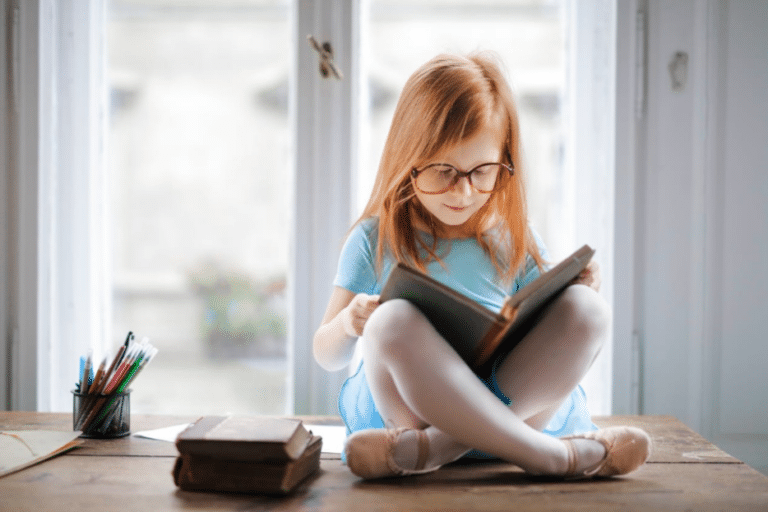
When my three-year-old daughter first started day care this year, I witnessed firsthand just how hard separation anxiety in children can be. My heart broke each time she would cry or cling when I dropped her off at the unfamiliar child care centre. Saying goodbye was a tearful struggle for the two of us, as I always wondered whether this would develop into something much worse. After all, separation anxiety may affect the confidence of my baby.
A family breakup is an anxious time for any parent. You’re struggling with your own personal pain and sadness when a relationship ends. But you are not alone.
Your child experiences everything too, but often, without the language and emotional skills necessary to express and handle things. Kids feel the changes deeply, even if they can’t always say what’s wrong. They might feel shock, confusion, anger, sadness, or even relief, depending on the situation.
This can manifest in difficulties adjusting to separation. It can be a disturbing period for children who can’t do anything about a stressful situation they didn't ask for. For young children, it’s especially tough because they rely on routine and security. When their world shifts, they need extra support.
What is separation anxiety disorder?
Separation anxiety is a normal developmental phase where children feel upset or fearful when separated from their caregivers. Starting between 6 months and 3 years, it’s common in younger kids and usually improves as they grow older and feel more secure.
What's known as separation anxiety disorder, on the other hand, is more intense and persistent. Also called social phobia, SAD interferes with a child’s daily life and may cause severe distress or physical symptoms, such as nausea or vomiting. If the anxiety persists beyond what’s typical for their age or becomes debilitating, it’s important to seek professional help.
If your child is starting to show signs of sepanx, here are tips to help avoid intense separation anxiety in your kids during the transition you can practise on a daily basis.
9 Tips to ease separation anxiety in children
1. Your first priority is your well-being.
It’s not easy facing single parenthood when you are stressed and emotionally vulnerable. Parents or carers tend to put our kids over our own needs. But your self-care is all about modelling emotional intelligence. You are showing you have resilience, even when you suffer. Lay off the alcohol, increase your exercise, get a massage, be informed with good legal advice and let go of negative friendships. Get counselling support if you need a safe space to explore your overwhelm. Remember, you can't pour from an empty cup.
2. Remember to breathe.
Many times, the guilt of leaving your child becomes overwhelming. To manage a moment of emotional overload, slow down your breath rate. Your heart rate will reduce, as will your thought rate and your stress levels. Settle into a regular, steady breath rate and get your pulse rate down well below 90 beats per minute. Use your smart phone to measure your pulse. Give yourself time to resettle and be still together with your child while you calm down.
3. Kids of any age are not ‘acting out’.
They are reaching out for your understanding and reassurance. You are their safety zone and security blanket.
Kids want to love and feel connected to both their parents, regardless of prior conflicts. When one or both parents are angry, they can be unsure if they can openly show this. Some kids will feel responsible for the parent who moved out of the family home, worried about how they are going.
Your child’s clinginess or tantrums aren’t about being difficult. They’re looking for reassurance and understanding. Give your child love and understanding amidst this difficult time. Be their safe place, even when it’s hard.

4. Young children are often overwhelmed and confused.
Your child might feel as if their world is no longer reliable. The absence of familiar faces, being in a new place, having new rituals. Some changes are likely and often short term:
- changes to sleep and eating;
- being clingy, unsettled and more demanding;
- acting out with anger or aggression towards one parent; and,
- regressing to younger age behaviours.
They can’t tell you how they feel, so you need to look and listen with care. Your comfort will help them move through this distress, get used to the different life, and feel secure again.
5. School age children can tell you more about their feelings.
Make time to tell stories, listen and be together.
Active listening is an important skill to use. Help your preschool and school age child name emotions and recognise what they are feeling to help reduce frustration. Remember you are not telling your child what they are feeling. You are helping them understand more about their emotional experience.
How to help children with separation anxiety during divorce
6. Teens have strong opinions about family life.
Teenagers will want time to explore the morality and consequences of family changes. Their stresses are often about the disruption to their sense of security, study stresses, and the impact in their social and relationship networks. As they assert their independence, they may become more likely to challenge your decision to separate and be angry and hurt about the failure of family life. Listen with empathy and validate their feelings. Pay full attention to body language, facial expressions and gestures. Take what your child is saying seriously and try not to judge or criticise him/her.
For any child adjusting to separation, but especially teens, child inclusive mediation is a great way for them to have a voice in the separation process.
7. Emotional moments are opportunities for intimacy.
Don’t reject your kid’s negative emotions, such as anger, resentment or jealousy. Instead accept their emotions and encourage your child to explore these with you. These moments are opportunities to build a connection and to teach your child skills to soothe themselves.
When you promise them you'll be back, be reliable. Practice being apart. Regularly spend time apart where they're with someone else. Be consistent with your parenting values. Set limits on inappropriate behaviour and help them problem-solve one step at a time towards behaviours that you see as reasonable.

8. Play smart and stay fair.
Support their relationship with their other parent and make sure handovers are neutral times. Accept there will be differences in their two new homes. Things will not return to what they had been used to.
Still, keep your routines as predictable and structured as you can, even if the other parent doesn’t.
Work out how you can both attend sports and extra-curricular activities respectfully.
Don’t quiz the kids or let them be conduits for information, messages or problems. Drop the fantasy that one day you’ll tell them what really happened, and that they will take your side.
9. Don’t be shy to seek help.
But start with your needs first. If you are managing your moods, worries and difficult decisions well, you will be able to guide and lead your kid’s adjustment needs. If you are really concerned about your child adjusting to separation, don’t hesitate to seek counselling together, so that you are supporting your child.
Conclusion: How to help your child overcome separation anxiety
Separation is hard on everyone, but with love and patience, your child will find their way through. I know because I’ve seen it with my own toddler. Those early weeks at day care were full of tears (for both of us), but slowly, she started to settle. Now, she loves her friends and teachers and comes home bursting with stories about her day. She’s learned to enjoy being with people other than her family members, and I’ve learned that our kids are far more resilient than we give them credit for.
Take it one step at a time, and don’t forget to lean on your own support system. As single mums, we’re stronger than we think.
And so are our kids.













